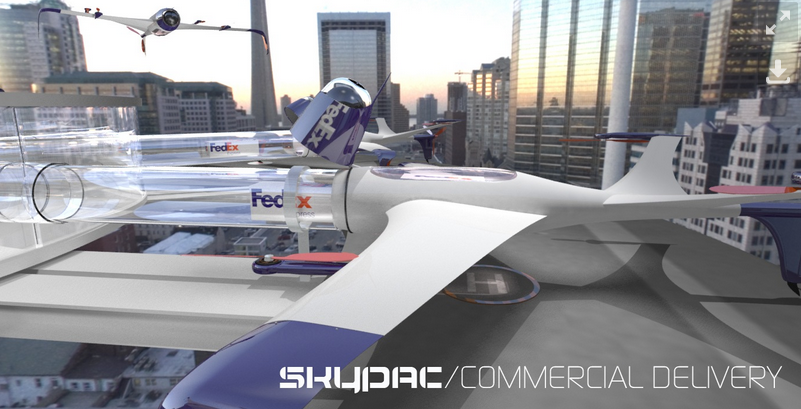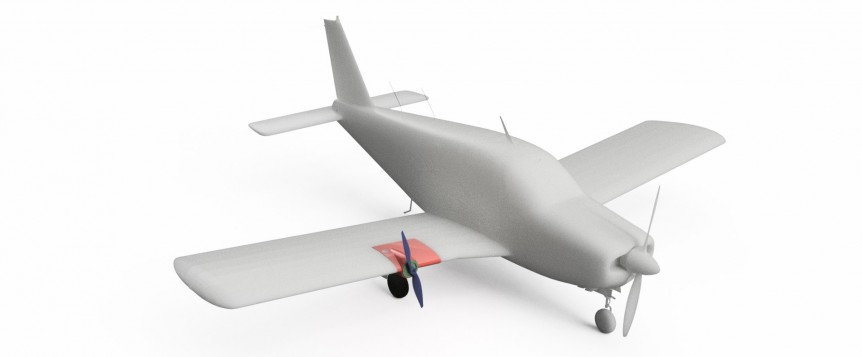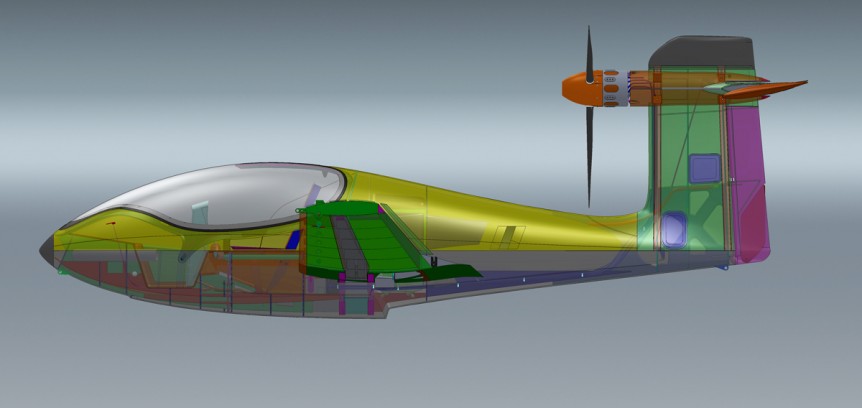Three congresspeople flew on wood-waste fumes this week, aboard an Alaska Airlines Boeing 737-800 on its way from Seattle-Tacoma International Airport (SEATAC) to Washington, DC. It was the first commercial flight to “to be powered by a blend of renewable jet fuel made from forest residuals.” Waste Products Replace Fossil Fuels Alaska, Boeing, and SEATAC have partnered on including biofuels in the mix since early 2015, as reported here. Later that year, United made flights out of Los Angeles International (LAX) using a blend of fossil-based jet fuel and biofuels made from farm and municipal waste. Keeping waste out of landfills and producing a lower carbon-footprint fuel has several benefits. In the case of forest waste, those branches, limbs and twigs that litter the forest floor after a timber harvest, cleaning that debris away lowers fire risk in the warm seasons and makes renewable isobutanol. Developed through a five-year project led by Washington State University and the Northwest Advanced Renewables …
Pipistrel, Sino GA Sign Memorandum of Agreement
China has over one billion, four hundred million people. Slovenia has a little over two million. This population disparity has not kept Pipistrel d.o.o. Ajdovscina and Chinese company Sino GA Group Co. from signing a Memorandum of Understanding for a long-term joint-venture in the field of light and general aviation in the regions of China, East Asian countries and the Asian Pacific region. Pipistrel, led by General Manager Ivo Boscarol, has built many airplanes in its 27-year history (including over 800 of its Sinus/Virus series), and earned plaudits for its clean manufacturing and ethical management. It has led in development of electric motorgliders, an electric training aircraft, and a high-performance hybrid cruiser. It won the Green Flight Challenge in 2011 with a battery powered aircraft that managed to cruise at over 100 mph for 200 miles and returned 403.5 passenger miles per gallon. That airframe has been converted to hydrogen power and was flown in September in a 10-minute demonstration …
Brian Carpenter’s EMG-6 Webinar
Brian Carpenter, designer of the EMG-6 motorglider which he’s shown over the last several years at AirVenture, will stage a webinar to discuss “the design and development concepts of this new electric motorglider.” His talk will have special “Emphasis on the integration of the electric propulsion concepts that he believes will change the face of the light aircraft and ultralight industry.” Your editor has visited Brian’s Corning, California workshop several times, and always found new and innovative approaches to producing a low-cost, self-launching motorglider, with several ways to simplify construction and to power the craft. It will be interesting to see progress on the newest motor (apparently still under development) Brian has presented on his web site. He has been experimenting with low-budget hydroforming for making repeated metal parts and making plastic parts using 3-D printers. His shop is always worth seeing. The webinar, to be held Wednesday, October 19, 2016 will take place from 7:00 PM – 8:30 PM …
Airbus and Local Motors Team up For Cargo Drone Competition
Richard Glassock, a long-time contributor to the blog and now a Research Fellow in Hybrid Propulsion Systems for Aircraft at the Institute for Aerospace Technology, the University of Nottingham, England, shared this news about an Airbus-sponsored contest for cargo drone designs. Local Motors, well known for its 3D-printed automobiles, and Airbus Group, well known for its range of commercial and military aircraft, just completed a design contest that drew 425 entries. Rewards were significant for the top three places in the competition, with a main award First Place prize of $50,000, a trip to the Farnborough Airshow in England, and a “1-of-a-kind Cargo Drone Flight Jacket with personalized patch.” Second place earned the winner $20,000 and third place $10,000, with garnering each a trip to the Farnborough Airshow. Airbus executives judged the entries and decided winners. Design criteria included required capabilities and characteristics: Vertical takeoff and landing (VTOL) and efficient forward flight. Hybrid design between multi-rotor and fixed-wing aircraft. Two …
Siemens 260 kW Motor First Flight, and a Siemens at the 2016 SAS
Siemens Motors announced the first public flight of their SP260D motor in an Extra 330LE aerobatic aircraft – although the motor had made its maiden, but not so public, flight on June 24. Putting out 260 kilowatts (348.5 horsepower) in near silence according to Siemens, the motor will certainly be capable of putting the Extra through its paces. The motor weighs only 50 kilograms (110 pounds), and with its Siemens inverter adds little weight to the nose of the Extra. Pipistrel-designed battery packs grouped behind it push the power-pack weight toward the center of gravity, which should enhance handling qualities. As Electronics Weekly reports, “Support structures have been on a finite element analysis diet. The aluminum ‘end shield’, for example, which supports the motor end bearing and takes all the propeller forces, went from 10.5 (23.1 pounds) to 4.9kg 10.8 pounds) .” This presentation shows the process on page 12. A finite element analysis program, NX Nastran, removed bits that …
Needed: a Four-Seat Light Airplane for Electrifying Research Project
We’d all love to have a hybrid electric airplane – inexpensive to fly with great range and guilt-free airport hamburgers. Jeffrey Engler, who heads an innovative project devoted to green aviation, explains: “Our plan is to convert a Piper Cherokee, Cessna 172, or similar light four-seater to electric hybrid power. The airplane should be airworthy with a serviceable engine and avionics. We don’t want a hangar queen or an airport relic – just a flyable, reasonable example at a reasonable price.” Aeronautics students at Purdue University, as part of their graduate work, are backing this program. Jeffrey reports, “The rock stars at Purdue presented their first interim report yesterday, including a background on electric aviation and their initial evaluation of the Cherokee retrofit. It’s too early to say where the numbers will come out, but we’re excited for their detailed analyses and recommendations in March. Here’s their deck (link). Congrats team!” (Editor’s Note: It’s apparent the students have done their homework. The presentation shows …
Tomas Brødreskift to Appear at SA Symposium
With the upcoming Sustainable Aviation Symposium (May 6-7, 2016) already packed with stellar presenters, we are excited to have Tomas Brødreskift join the faculty. An industrial designer whose skills in product and process design, project management, ergonomics, and visual and CAD design have led and enabled him to bring his amphibious Equator P2 Xcursion to life will share his expertise and experiences with attendees at the Sofitel San Francisco Bay. Tomas’ demonstrated skills in designing everything from Hardrocx mountain bikes to an array of consumer goods have helped prepare him to guide the Xcursion from concept to final product. Since he has overseen every step of the design/build process, the airplane is a reflection of its unique specification and its designer’s attention to detail. The Equator web site explains, “The P2 was designed from the ground up to be a highly practical aircraft. It is made for 2 people initially (with a future option for 4 seats) with focus on …
The Sustainable Aviation Symposium – A Wealth of Knowledge
Coming May 6th and 7th, the first-ever Sustainable Aviation Symposium will take place at the Sofitel San Francisco Bay Hotel. This year’s presenters include an international array of accomplished talent in aerodynamics, power, and energy storage, with a few surprises on tap. Keynote speakers include: NASA Chief Scientist Dennis Bushnell PADA Trophy winner and Pipistrel Designer Dr. Tine Tomazic Dr. Joseph Kallo of the DLR (Germany’s NASA) Lehigh University’s Dr. Justin Jaworski Pelican Aero Group’s Philip Barnes Additional presentations include Nobel Prize winner Dr. Benjamin Santer of the Intergovernmental Panel on Climate Change; Eric Raymond, the highest time solar pilot in the world (his latest 6-seat solar aircraft pictured above); Dr. Yi Cui of Stanford University with the latest in battery technology, Dr. Daniel P. Raymer on Inspirations from the Vought 173 and PADA Trophy winner Boris Popov, whose ballistic parachutes have saved hundreds of lives. Another dozen, including NASA battery expert Dr. Eric Darcy and Siemens e-Aircraft head Dr. Frank …
Caging Silicon Anodes with Graphene
Dr. Yi Cui of Stanford University has expanded the idea of “battery” to include conductive ink on paper, fruit-like clusters of energy-storing capsules, and now, nano-sized graphene cages in which the energy can romp like a hamster in a plastic ball. He will be on hand at this year’s Sustainable Aviation Symposium on May 6, at the Sofitel San Francisco Bay hotel. His pioneering work with silicon as an electrode material goes back at least ten years, and has focused on overcoming silicon’s two major problems in battery use. Silicon expands and begins breaking down during repeated charge-discharge cycles. It reacts with battery electrolyte to form a coating that progressively destroys performance. The combination of crumbling and coating finally makes the battery inoperable. His group at Stanford had found a way to “wrap every silicon anode particle in a custom-fit cage made of graphene, a pure form of carbon that is the thinnest and strongest material known and a great conductor …







